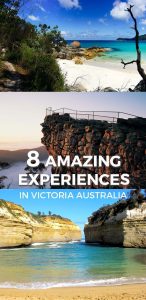Tradition and history are combined in the city of Trinidad, located in the province of Sancti Spíritus, in the south coast of the Cuban central region, at 370 km. of Havana. Founded in the early 16th century in honor of the Holy Trinity, the city was the third village founded by Spaniards in the island of Cuba. Trinidad was a bridgehead for the consent of the American continent, and it was the home of rich landowners who constructed beautiful mansions and palaces. This fascinating place, also known as the city-museum of the Caribbean, it's considered a National Monument and it's one of the most attractive destinations for those who prefer going on vacations to Cuba.
This city is recognized as an architectural jewel. Frozen in the past, Trinidad exhibits a unique site, where the beauty of its near untouched colonial style grants the city the credit of being one of the most complete and best preserved colonial architectural groups of the American continent, an authentic invitation to photograph. Its houses and churches, its colonial mansions that became museums, all of Trinidad reminds us ancient times, like some kind of nostalgic evocation of the colonial epoch.
Trinidad offers many interesting cultural attractions for your cuba vacations. Among them are the Manaca-Iznaga tower, located in the area where one of the most influencing families of the region made its fortune, the Valle de los Ingenios, the beaches, the Tope de Collantes Mountains, as well as the art and craft traditions characterizing the small city. Its urban center stands out for its cobblestoned streets and appealing constructions protected and decorated by railings with single shapes.
Thanks to the rich urban setting, the small squares and beautiful buildings that date from the Spanish colonial time, Trinidad has been declared by UNESCO Humanity's heritage, along with the nearby Valle de los Ingenios.
The visitor can appreciate the architecture of its 18 th and 19 th century buildings, such as the Palacio Brunet and the Palacio Cantero, which were built in the city's days of prosperity derived from the sugar trade. A combination of neoclassic and baroque styles in Trinidad's architecture is testimony of a history of opulence and wealth.
The city of Trinidad states an important touristy attraction in the island. The best places of interest are located in the historical center where visiting the Plaza Mayor has become very popular fir its surrounding memorable residences of the city: the house of the regidor Ortíz, today Gallery of Art Benito Ortíz, the house of Padrón (Museum of Archeology Guamuhaya), the Palace of Conde Brunet (Romantic Museum), and the house of the Sanchez Iznaga family (Museum of Architecture). Another appeal of the city is the Iglesia Mayor de la Santísima Trinidad, considered one of the largest churches of Cuba which reunites several pieces of great value like the Christ of the Vera Cruz and an altar dedicated to the Virgin of Mercy.
Around the Plaza Mayor other outstanding constructions like the Cantero Palace can be adapted, where the Museum of History is located at the moment; I also suggest visiting other places of cultural interest like the House of the Trova and the House of Music. In the same way the visitor can make a stop in the bar the Canchánchara, to taste a traditional drink of the same name, made with brandy, honey and lemon.
Near the city, an excursion that must be in every visitor's itinerary is a visit to the Valle de San Luis also called Valle de los Ingenios since it was beset of sugar factories in the 18th century. This valley is a true archaeological monument to the sugar industry because numerous ruins of the facilities related to the manufacture of sugar are conserved, like sugar mills, the large cabins of slaves, the summer houses, etc. I recommend admiring the elegant bell tower of the Manaca-Iznaga tower which was used in the past to keep an eye on the slaves. In this valley the visitor can enjoy the countryside; horse riding, the excursions to caves and rivers and the towns like San Pedro, considered a Natural Museum of the African Culture in Cuba.
Other sites are the Viewpoint of La Vigía with a wonderful view of the region, the Plaza de Carrillo, also known as the Parque Céspedes where the Parish of San Francisco de Paula, constructed in the 19th century, is located. Nearby there is also the Bar Cafeteria Daikiri and the Casa Fisher places chosen by the Casa Artex to organize many cultural activities. In addition, one of the best views of the city can be obtained from the tower of the Convent of San Francisco de Asís.
Culture and history followers will find in the city of Trinidad and its surroundings a unique place to be on holidays. One can ramble by its spotted streets and appreciate its diversity of styles, visit its museums and its cultural facilities, and enjoy the work of the local artists of pottery, crafts, weave, music and dance; living the rhythm of a city full of customs and traditions, where popular culture will captivate any guest.
Furthermore, very close to the city, one can discover the mountainous zone of Topes de Collantes only 19 kilometers away; an ideal place for the diverse existing variants of ecotourism and tourism of health; while to the south, in the Peninsula de Ancón, the best beach of the South coast of the country can be found: the Playa Ancón.
Museums, churches, sugar mills, buildings, squares and small squares of Trinidad, the city-museum of the Caribbean Sea, institute one of the highest expressions of national history available. This, combined with its friendly and welcoming people, make this city a great choice for your cuba vacations.


